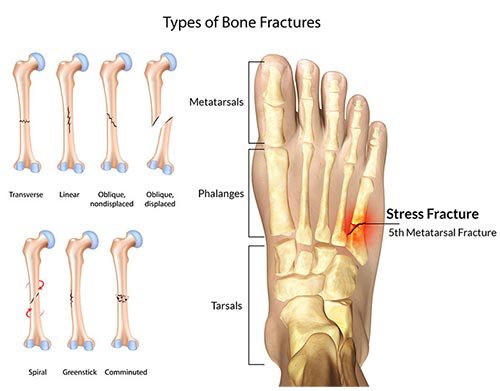Stress Fractures of the Feet
Types of Foot Stress Fractures
What Is a Stress Fracture?
A stress fracture is tiny crack in a bone caused by repetitive stress or force, often from overuse.
Forces that can cause a stress fracture could include repeatedly jumping up and down or running long distances.
Swelling and pain that worsen over time are symptoms.
Treatment includes a walking boot, brace or crutches to reduce the bone’s weight-bearing load.
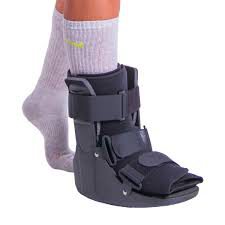
Stress fractures can be considered an overuse injury of a bone. The bones in the body are constantly changing, responding to the work load that is placed upon them, and there is a constant turnover of cells as bone acts to repair itself. The more load placed on the bone, the more likely that calcium will be placed at that site. The less use a bone receives, the less calcium can be found within it. If the stress of repetitive loads overwhelm the ability of the bone to repair itself, small cracks can begin to occur within the bone structure.
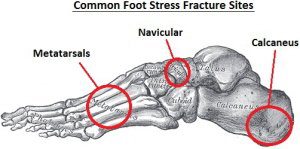
This is especially evident in the bones of the foot, leg, and pelvis. These bones need to absorb the forces created from walking, running and jumping. Up to 12 times the weight of the body may be generated with each step; and the bones, joints, muscles, and ligaments need to cushion the body against that force.
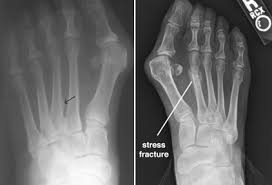
Stress fractures usually occur when people change their activities. Examples include trying a new exercise, suddenly increasing the intensity of their workouts, or changing the workout surface (jogging on a treadmill vs. jogging outdoors). In addition, if osteoporosis or other disease has weakened the bones, just doing everyday activities may result in a stress fracture. Several other factors — from your training regimen to your diet — can increase your risk for a stress fracture.
 Bone Insufficiency
Bone Insufficiency
Conditions that decrease bone strength and density, such as osteoporosis, and certain long-term medications can make you more likely to experience a stress fracture. This can occur even when you are performing normal everyday activities. For example, stress fractures are more common in the winter months, when Vitamin D is lower in the body.
Studies show that female athletes are more prone to stress fractures than male athletes. This may be due, in part, to decreased bone density from a condition that doctors call the “female athlete triad.” When a girl or young woman goes to extremes in dieting or exercise, three interrelated illnesses may develop. These illnesses involve eating disorders, menstrual dysfunction, and premature osteoporosis. As a female athlete’s bone mass decreases, her chances for getting a stress fracture increase.
Poor Conditioning
Doing too much too soon is a common cause of stress fracture. This is often the case with individuals who are just beginning an exercise program – but it occurs in experienced athletes, as well. For example, runners who train less over the winter months may be anxious to pick up right where they left off at the end of the previous season. Instead of starting off slowly, they resume running at their previous mileage. Athletes opt to increase activity levels, push through any discomfort and do not give their bodies the opportunity to recover. This can also can lead to stress fractures.
Improper Technique
Anything that alters the mechanics of how your foot absorbs impact as it strikes the ground may increase your risk for a stress fracture. For example, if you have a blister, bunion, or tendonitis, it can affect how you put weight on your foot when you walk or run, and may require an area of bone to handle more weight and pressure than usual.
Change in Surface
A change in training or playing surface, such as a tennis player going from a grass court to a hard court, or a runner moving from a treadmill to an outdoor track, can increase the risk for stress fracture.
Improper Equipment
Wearing worn or flimsy shoes that have lost their shock-absorbing ability may contribute to stress fractures.
The most common sites for stress fractures in the foot are the metatarsal bones. They occur over time when repetitive forces result in microscopic damage to the bone. The repetitive force that causes a stress fracture is not great enough to cause an acute fracture, like a broken ankle caused by a fall.
The most common symptom of a stress fracture in the foot or ankle is pain. The pain usually develops gradually and worsens during weight-bearing activity. Other symptoms may include:
- Pain that diminishes during rest
- Pain that occurs and intensifies during normal, daily activities
- Swelling on the top of the foot or on the outside of the ankle
- Tenderness to touch at the site of the fracture
- Possible bruising
Treatment includes a walking boot, brace or crutches to reduce the bone’s weight-bearing load. Refraining from high impact activities for an adequate period of time is key to recovering from a stress fracture in the foot or ankle. Returning to activity too quickly can not only delay the healing process, but also increase the risk for a complete fracture. Should a complete fracture occur, it will take far longer to recover and return to activities.
See the Foot and Ankle Clinic about Foot Stress Fractures
Podiatrists at The Foot and Ankle Clinic have vast experience in diagnosing and treating Foot Bone Stress Fractures and typically this treatment is very successful but involves a multifactorial approach.
At the Foot and Ankle Clinic our highly qualified team of Podiatrists are all members of the Australian Podiatry Association and offer a combined 50 years’ experience. They are trained to diagnose and effectively treat Foot Stress Fractures via a range of treatments.
Put your feet in our hands! See us today in Chadstone, East Bentleigh, Moe, Sale, Traralgon, Warragul & Online Store and Retail Enquiries. NO REFERRAL NEEDED!.

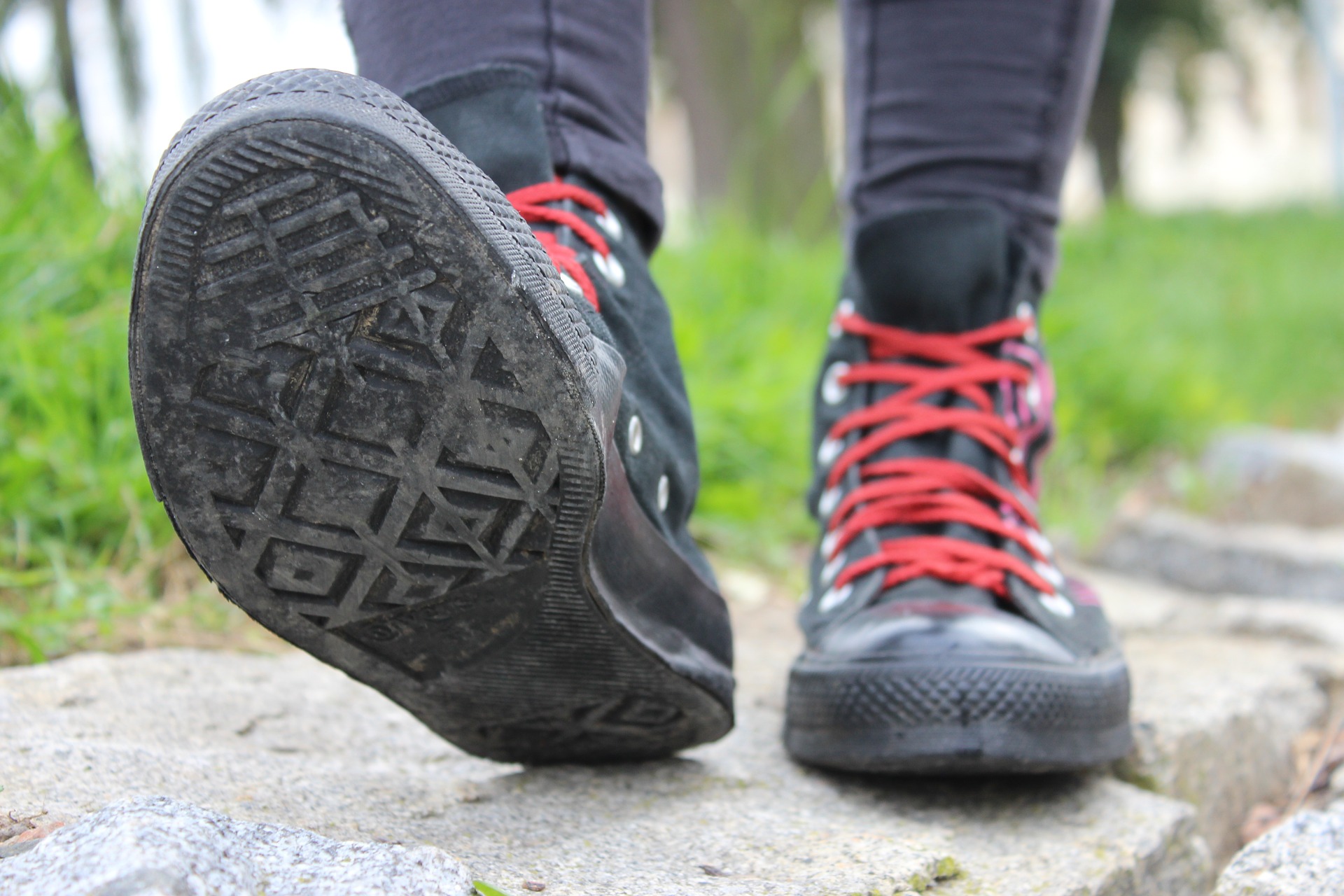
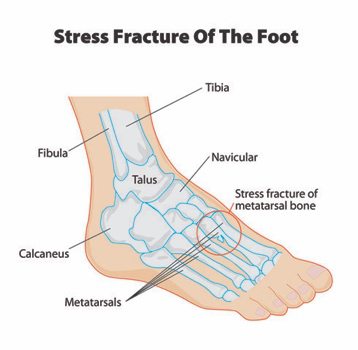 Bone Insufficiency
Bone Insufficiency